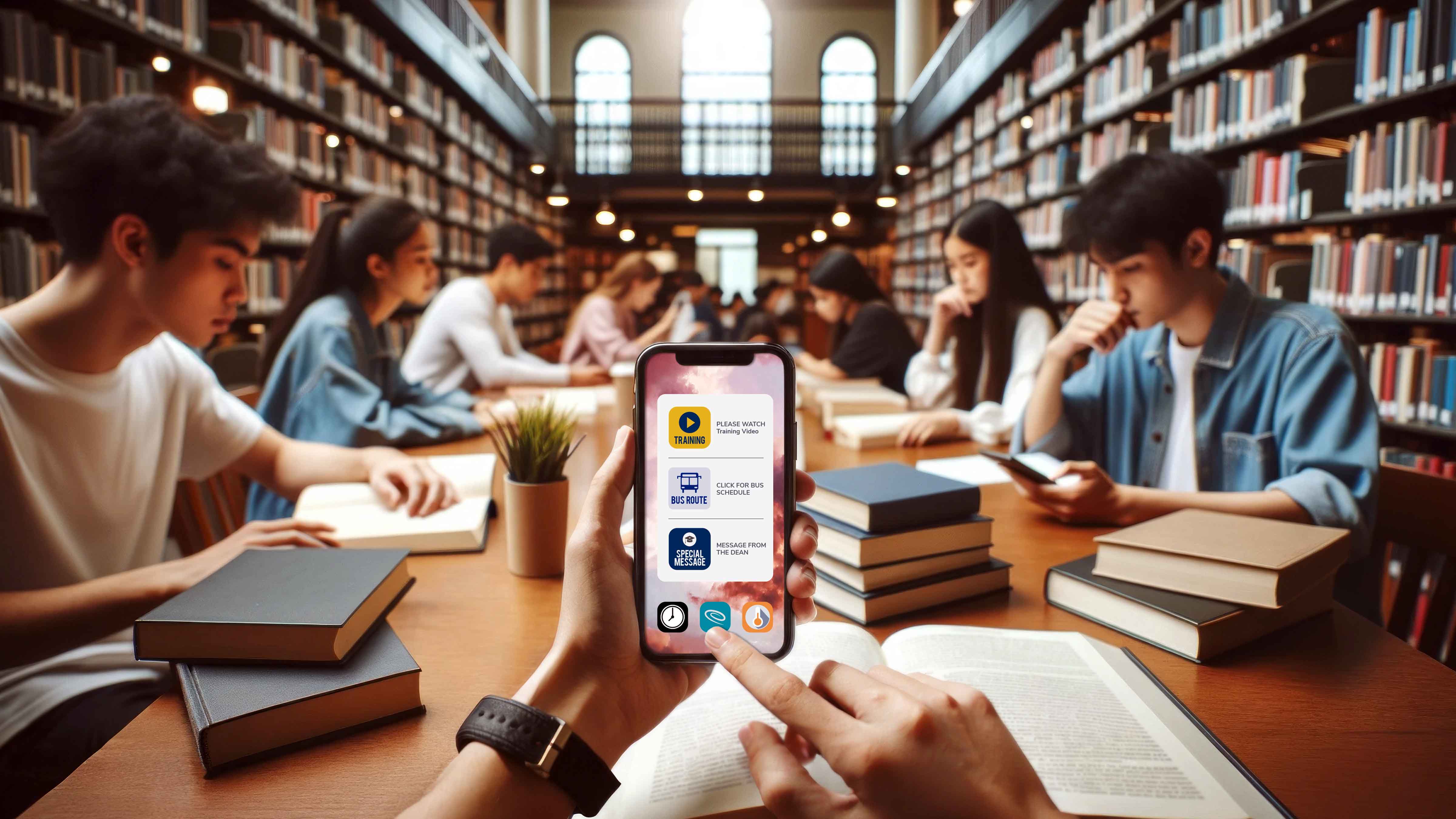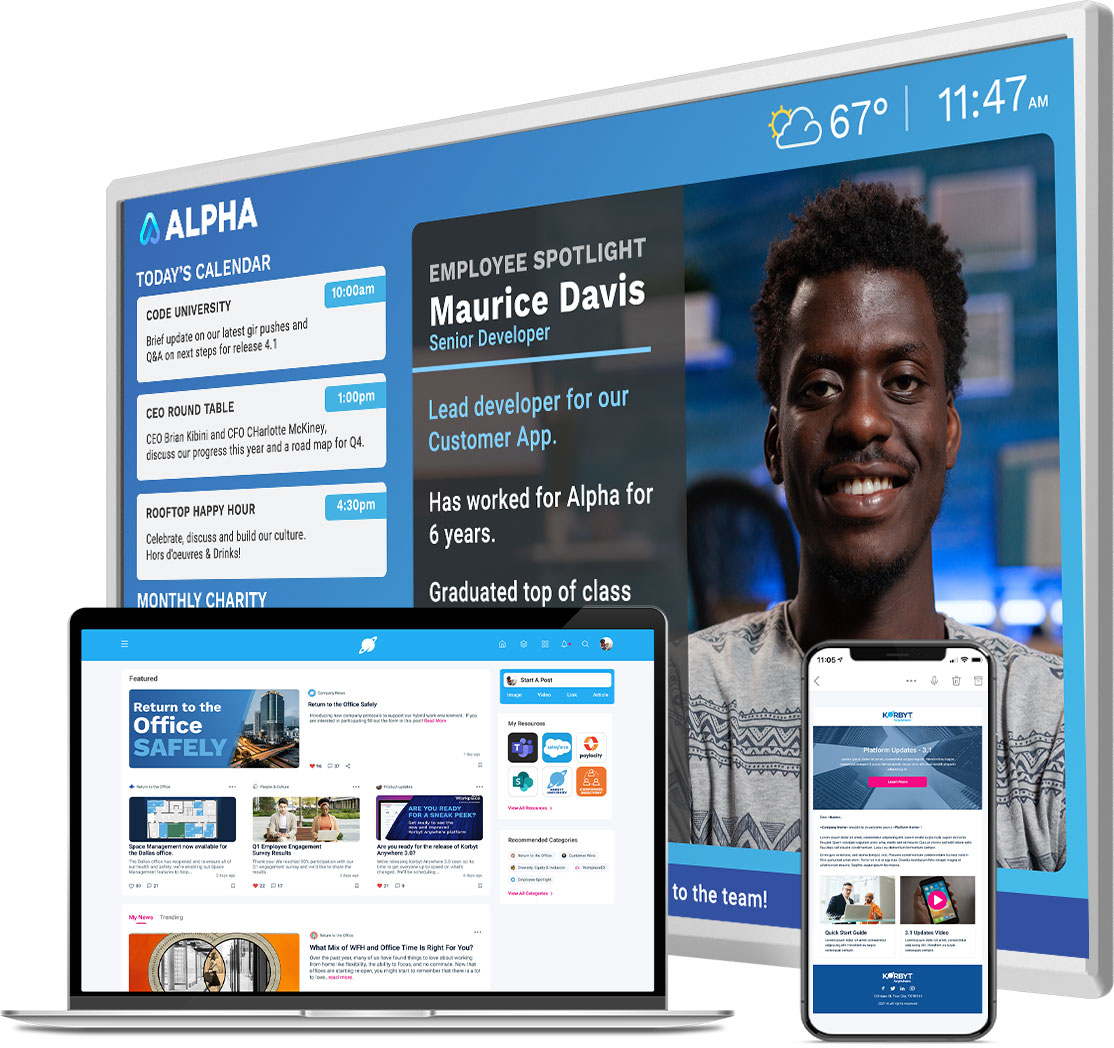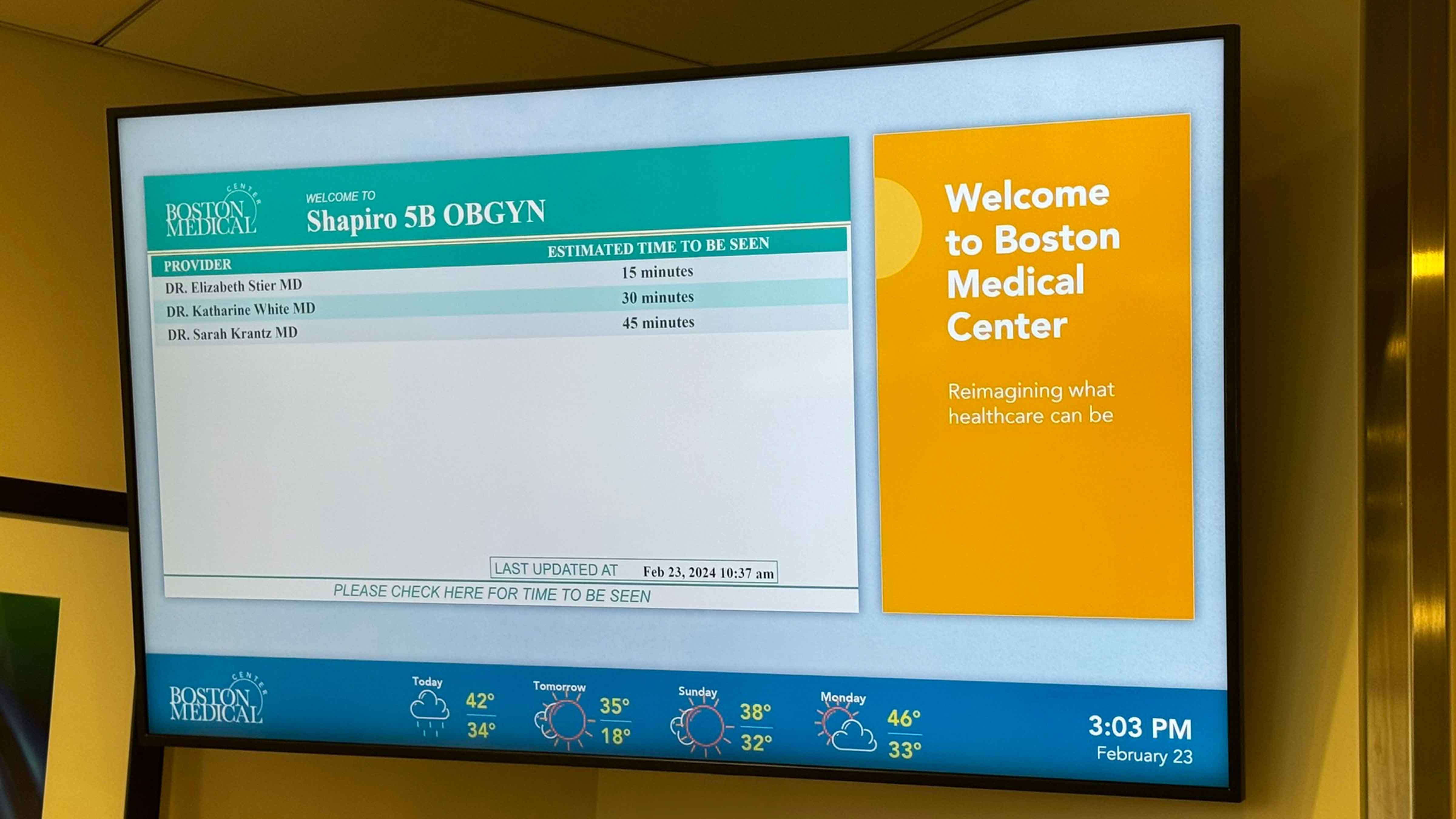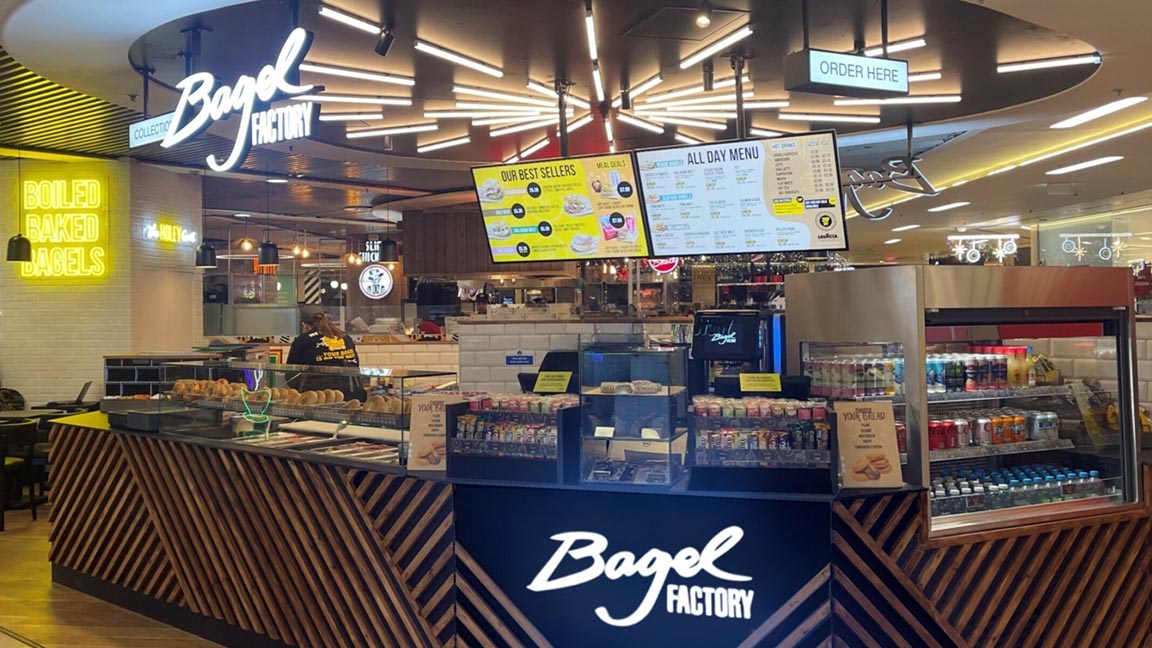The benefits of today’s digital signage systems go well beyond image resolution and screen size. Within the education, retail, and corporate markets, they have become flexible IP-based networked infrastructures that can target individual screens and/or groups of users with important and timely messaging.
[The Integration Guide to Digital Signage 2024]
With this new network sophistication has come a renewed focus on creating the right content that delivers the message in a concise and often colorful way. Many agree that it’s more about what you put on those screens (and where) that counts most. Dense text and static presentations have given way to interactive widgets and innovative graphic designs that successfully deliver the required information.
Academic Achievement
Carousel Digital Signage has been working with digital signage systems since 1997, primarily focused on the K-12 market. "I try and create content that is ‘visually absorbable,'" said Amber Ward, creative director at Carousel. "If you're looking at a mass of text all over the place and everything's not properly organized and your eye drifts, you're not going to retain the information, right? So, to place things properly on a screen, you need to make sure you've got enough breathing room in between the different elements on that screen."
With Carousel, content can be separated into on-screen sections called zones. "Your most important information should always be in the largest area of your screen, not your ticker along the bottom," she advised. "You can guide people not only with headlines but also by just the size of it, the color of it. Font choice is also really important to get your message across.”

According to Ward, the key for successful content creation on all devices is taking a holistic marketing approach and clearly articulating your messaging to the intended audience. “When I'm sending messages out, I'm not just blasting thousands of people with content that is not relevant to them,” she said. “The content designer needs to know what the school wants to say and know who you need to say it to. So, target your audience with the content and materials that they need to hear.”
Carousel’s digital signage platform is cloud-based, so subscribers can update screens and systems within minutes. Recently, the company announced that Carousel Cloud customers can leverage content they create in Microsoft Excel, PowerPoint, and Word for distribution throughout their digital signage networks. This is key for K-12 schools, as morning announcements and lunchtime menus that are created in Microsoft Word can be easily distributed.
The company also offers its Carousel Daily service, which sends targeted messages to mobile phones. Some messages can be sent to teachers, while others can be sent to the entire student body or subsets, such as student athletes. Ward said designing and delivering content for the small screen can be challenging, but should tie into the main messaging being sent out by the school’s administration.
“We can ask students to download an app or subscribe to a secure feed and they will get everything they need to know over the course of the day on their phone,” she said. “It's a little widget that pops up. It's also interactive. So, if there is a video that they need to watch, a phone number they need to call, or anything like that, they can click into it and do it all right on their phone.”
Banking Done Right

Another company that leverages the cloud is Korbyt Digital Signage. Its Korbyt Anywhere “workplace experience (WEX)” platform helps enterprises, universities, and corporate organizations curate and deliver engaging content to any screen, anywhere.
The company does a lot of work with retail deployments in banks, financial services offices, and insurance agencies. For example, to redefine its branch experience, Santander collaborated with Korbyt and OpenEye Global to incorporate digital signage solutions in more than 700 retail banking locations. “Enabling an integrated communications strategy is a major benefit for our customers,” said George Clopp, CTO of Korbyt.
As far as designing the right content, Clopp said that digital content in any retail setting needs to be impactful and eye-catching, but also needs to be relevant to the audience. He added that integrating data in real time is another compelling way to make digital signage more interesting to the viewer.
“Digital content helps improve brand consistency and conversion by promoting products like investment opportunities, bundled insurance packages, insurance rates, loans, credit cards, and other offers,” he said. “Korbyt Anywhere helps these businesses automate communications to simplify marketing promotions, while tailoring their offers by segmenting specific messages for different locations. We even offer the ability to personalize content to in-branch audiences using facial optic recognition to identify and display popular content.”
Content that stays the same over time can appear stale and irrelevant, while extracting real-time data feeds reinforces to viewers that the content is current and curated. For example, a financial services office could deploy templates that feature a mix of branded content, special offers, and stock tickers that mirror exchange market activity in real time. Weather and sports updates are also popular in retail locations, helping to entertain customers while they wait in line for assistance.
Creative elements like clip art, animations, and even font choice all ad to the success (retention) of a digital signage ad campaign. Clopp said that campaigns of any sort need compelling content, which is why Korbyt offers a library of templated content to make it easy for staff with little (or no) design expertise to create digital content that captivates, educates, and motivates viewers to act.
“Our banners are designed to maximize the visual impact of the displayed content,” Clopp explained. “Avoiding common pitfalls like too-small text or overcrowded layouts is crucial, but even the best-designed ad will fall short if it doesn’t reach the right audience. That's where our Clever Playlists come in, offering content managers a smart way to schedule and publish content to diverse audiences based on predefined criteria. With data-driven machine learning, Korbyt Anywhere even automates content delivery, learning which key messages resonate with specific audiences to make your content even more engaging.”
Boosting Bagel Sales
The Bagel Factory, a U.K.-based chain of convenience food outlets specializing in freshly baked and filled bagels, has digitized its stores with menu boards powered by the nsign.tv digital signage software platform. The technology is now powering the chain’s menu boards across 50 outlets at most major travel hubs in Ireland and the U.K. with a mix of static and dynamic content, while allowing quick updates with centralized cloud management across all locations.
“Digital menu boards, like those powered by nsign.tv at The Bagel Factory, are making the customer experience more engaging and dynamic,” said Mónica Fernández, managing director of nsign.tv, based in Barcelona, Spain. “They allow for real-time updates to pricing, promotions, and menu items, ensuring that customers are always seeing the most current options. This flexibility helps to reduce wait times, minimize order errors, and increase overall customer satisfaction. Additionally, the visually appealing content captures customer attention more effectively than static displays, leading to increased impulse buys and higher sales.”
As part of the ongoing project, The Bagel Factory has adopted nsign.tv for the majority of its new store launches and is transitioning from its previous poster booking solution. Content on the digital menu boards is dynamically adjusted based on the time of day, thanks to the advanced scheduling capabilities of nsign.tv’s software. For example, breakfast menus are automatically replaced with lunch menus as the day progresses, and special offers can be targeted during peak hours. Before adopting digital signage, these changes would have been made manually, which could lead to inconsistencies and delays in updating content.
With nsign.tv, the stores can manage the appearance of price adjustments, new menu additions, limited-time offers, and more across store-wide menu board systems, the majority of which are supported by iiyama displays with system-on-chip (SoC) processing. With nsign.tv already embedded in the screens, there’s no need for external media players, extra cables, or complicated installations, making the setup more streamlined and easier to manage, especially across multiple locations.
A Healthy Sign
Visix offers a group of applications that make up its AxisTV Signage Suite. AxisTV Manage is the CMS with easy content creation, importing, and scheduling tools. AxisTV Design is a desktop design app for more customized content, with extensive data integration and visualization options. AxisTV Engage is the player app.
[Executive Q&A: Sign of the Times]
“Retail content is always working to drive sales and brand loyalty, whether it be a product ad, limited-time offer, or rewards program,” said Sean Matthews, CEO. "Imagery and calls to action have to take center stage in retail to prompt people to act immediately. Whereas, for corporate, campus, and other settings, content can focus on motivation, culture building and long-tail campaigns."

Matthews added that widgets and templates are the foundations of every good CMS. “In every industry, people want to show live info like weather, menus, KPIs, queuing, or events, and to be able to set those up once and have them automatically update is a massive timesaver,” he explained. “The same goes for templates. Most people don’t have the time or design skills to craft every message from scratch, so using templates lets more people contribute so content doesn’t get stale. Pre-approved templates also standardize your branding across messages, which supports a more cohesive and attractive design aesthetic."
Earlier this year, Visix customer Boston Medical Group transitioned its AxisTV 9 digital signage network to AxisTV Signage Suite, giving patients a range of features that provide a helpful digital signage experience. This includes a software calendar app that can connect with Outlook for conference room bookings and other departmental needs. BMG has grown from 20 to 50 screens, and now have 29 departments with a presence on a secure network.
[Editorial: Ballad of the Broken Signage]
“One must have a grasp of good digital design principles, whether that be aspect ratios, color and contrast, negative space and juxtaposition, or font choices,” Matthews said. “The advantage of designing digital signage content versus a print campaign is that you can include motion, animation, and video to grab more eyeballs and make your messaging more dynamic. However, just like print design, if your content is boring or looks bad, people will ignore it.”
Designing and creating the best look and feel for the content on the screen is what sets deployments apart. “We often talk about customer experience, visitor experience, or employee experience, but it’s better to just concentrate on people experience," Matthews said. “Know your goals, know your audience, and design to those ends.”

